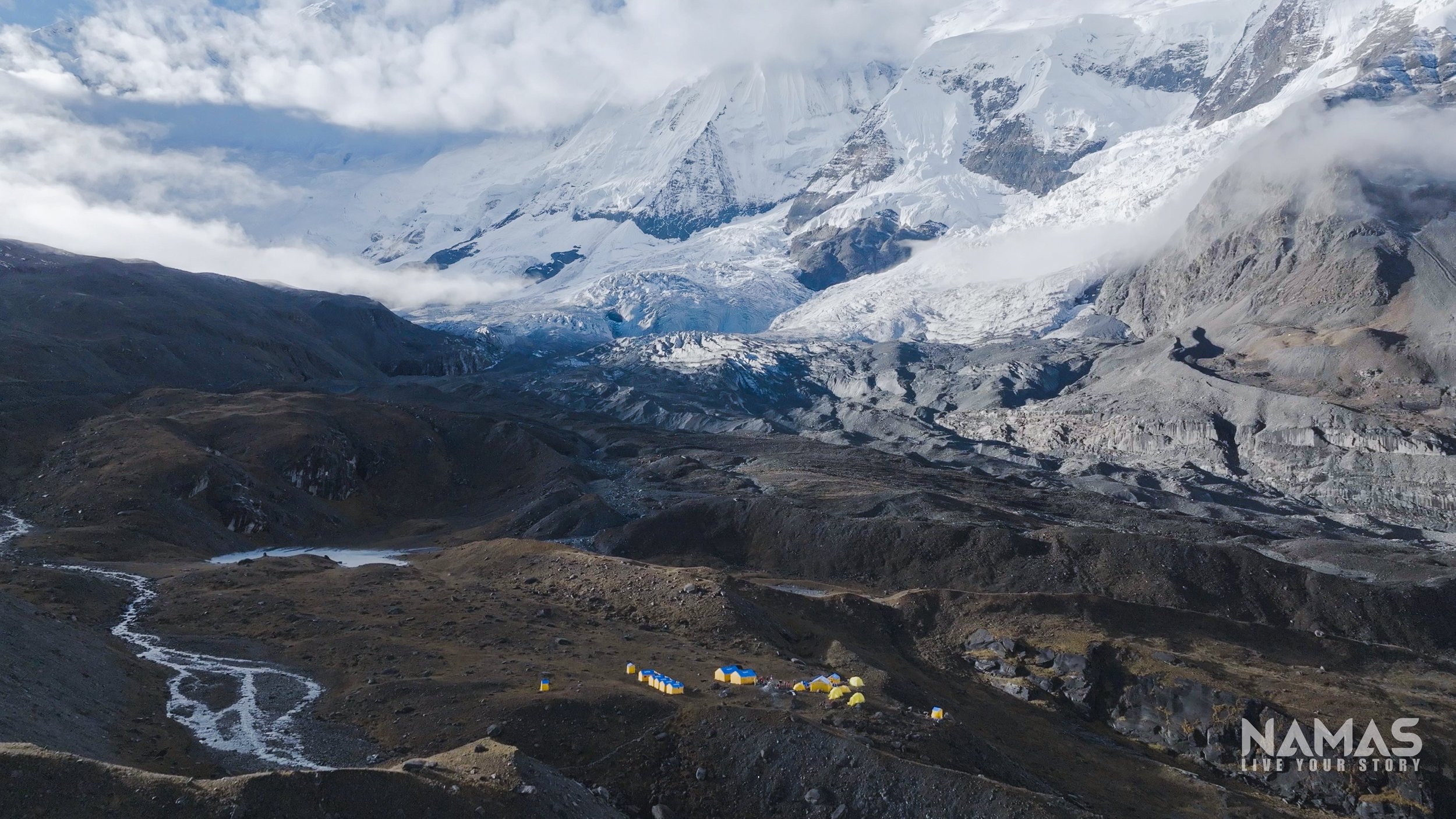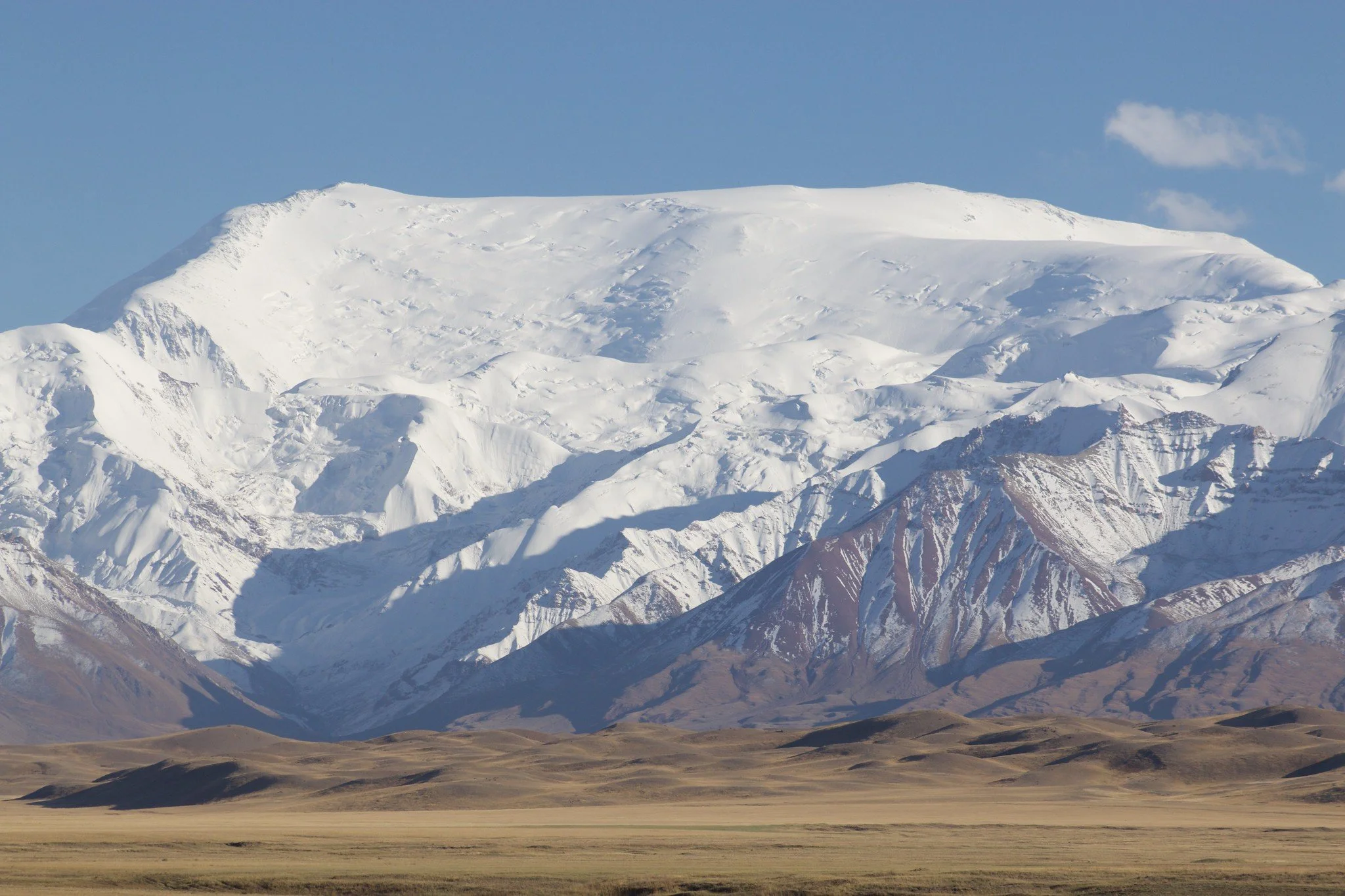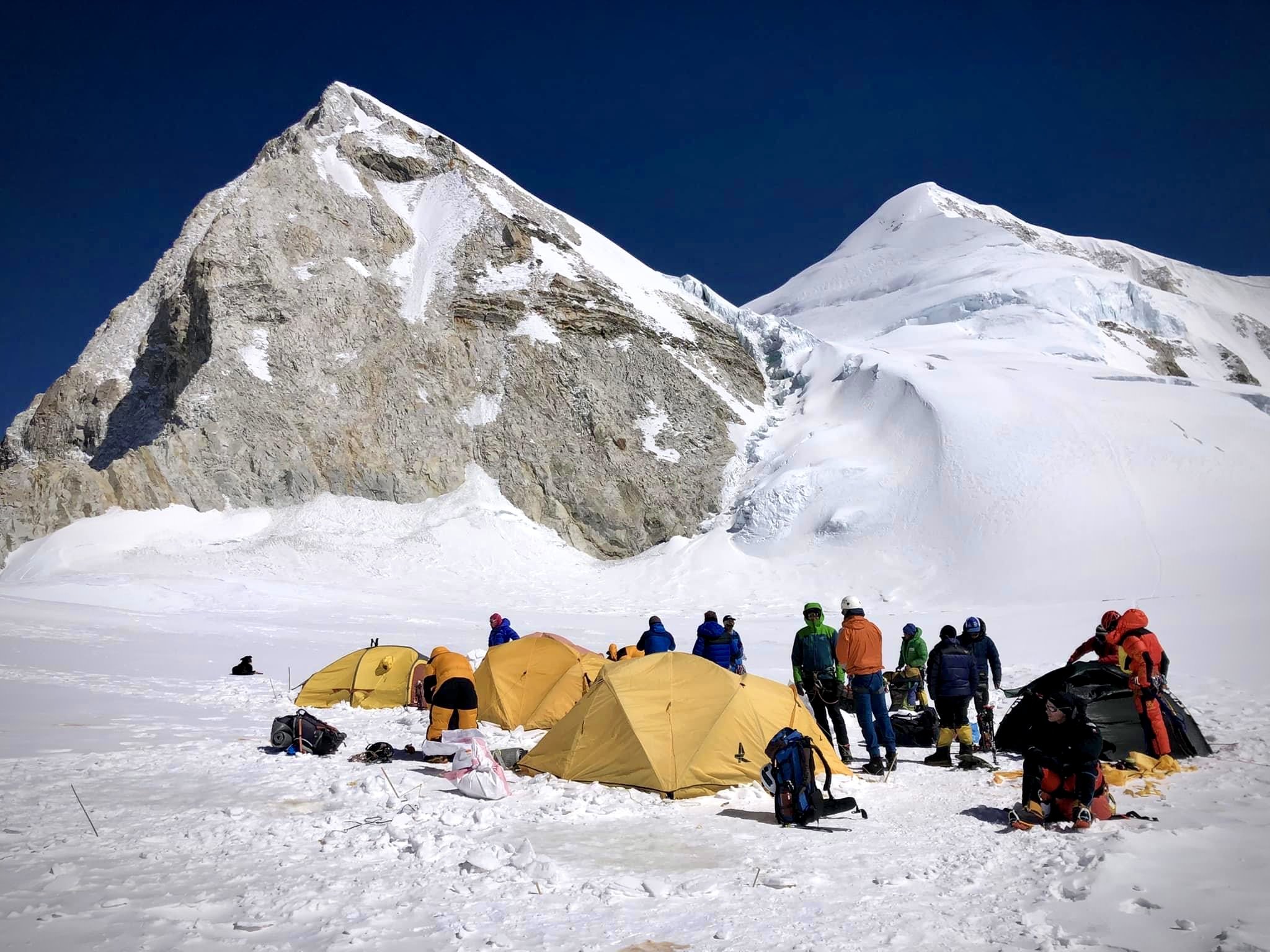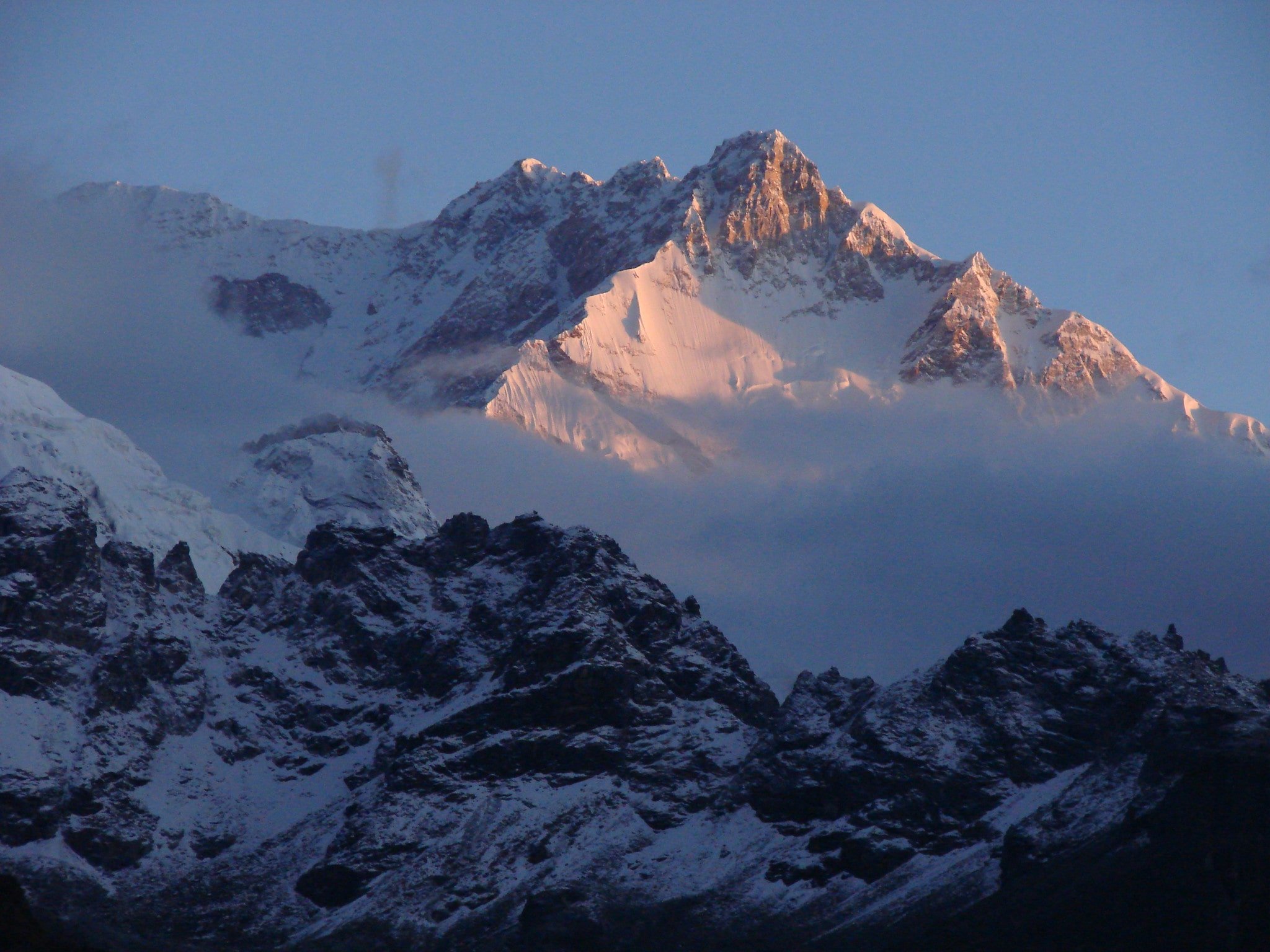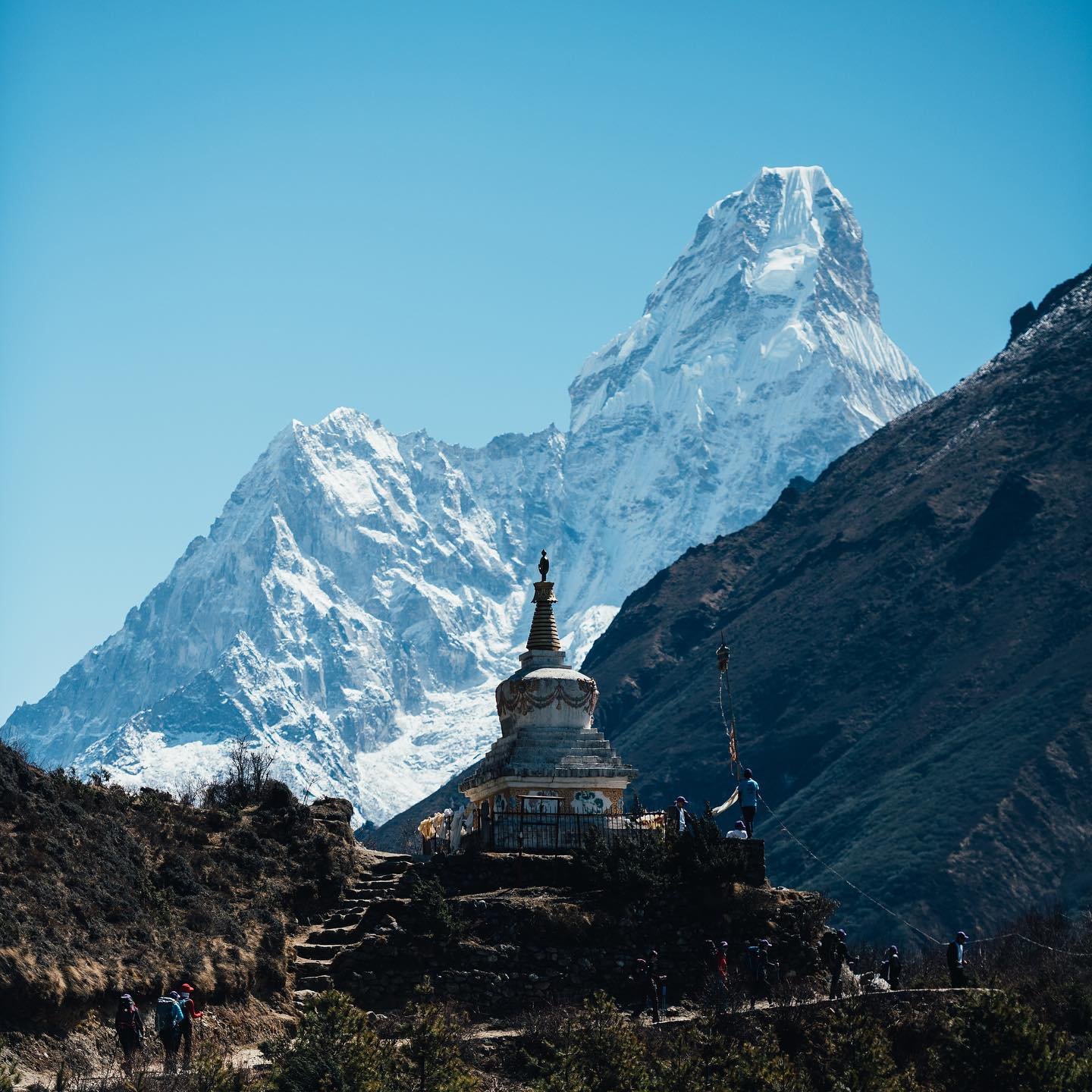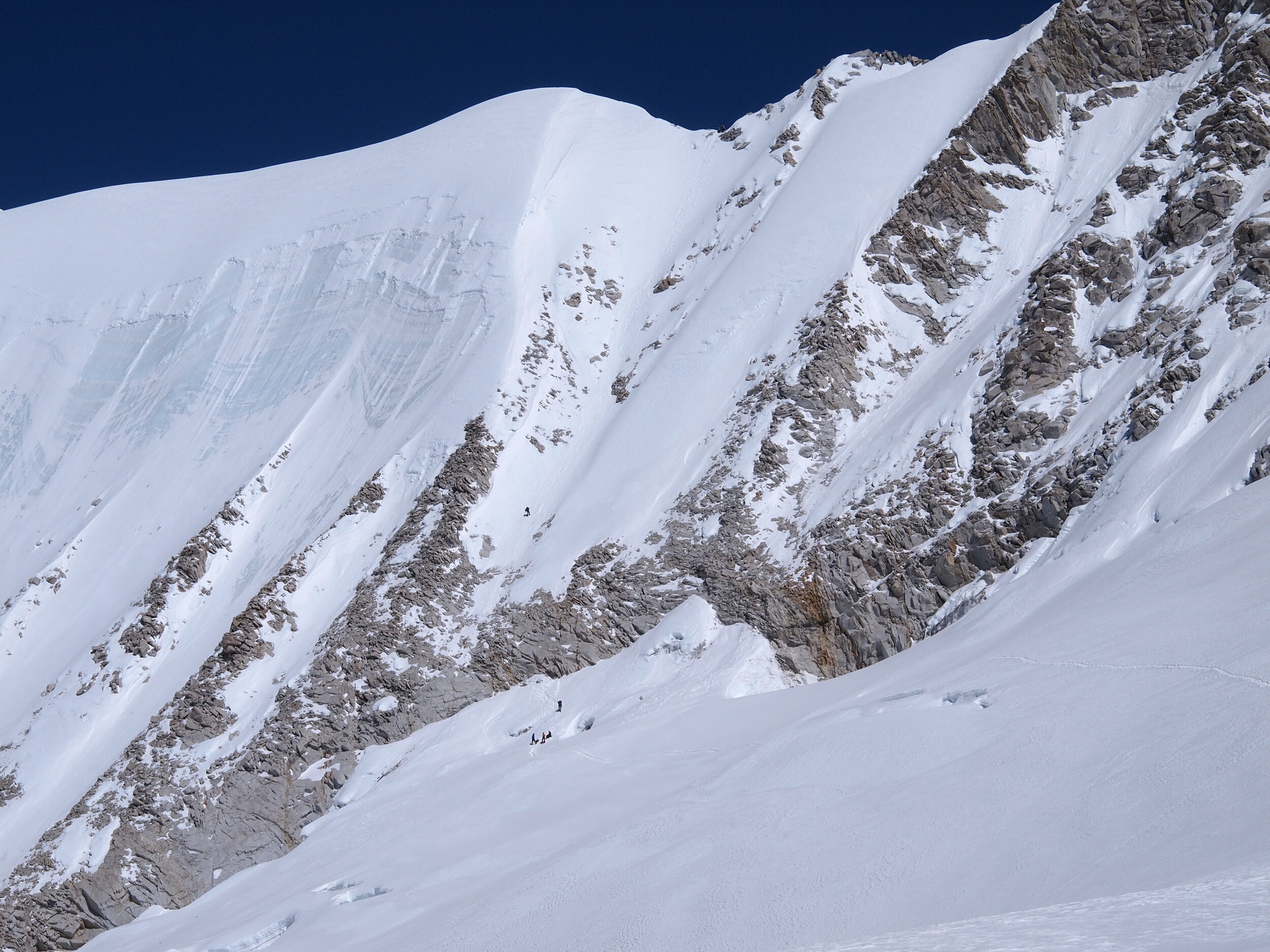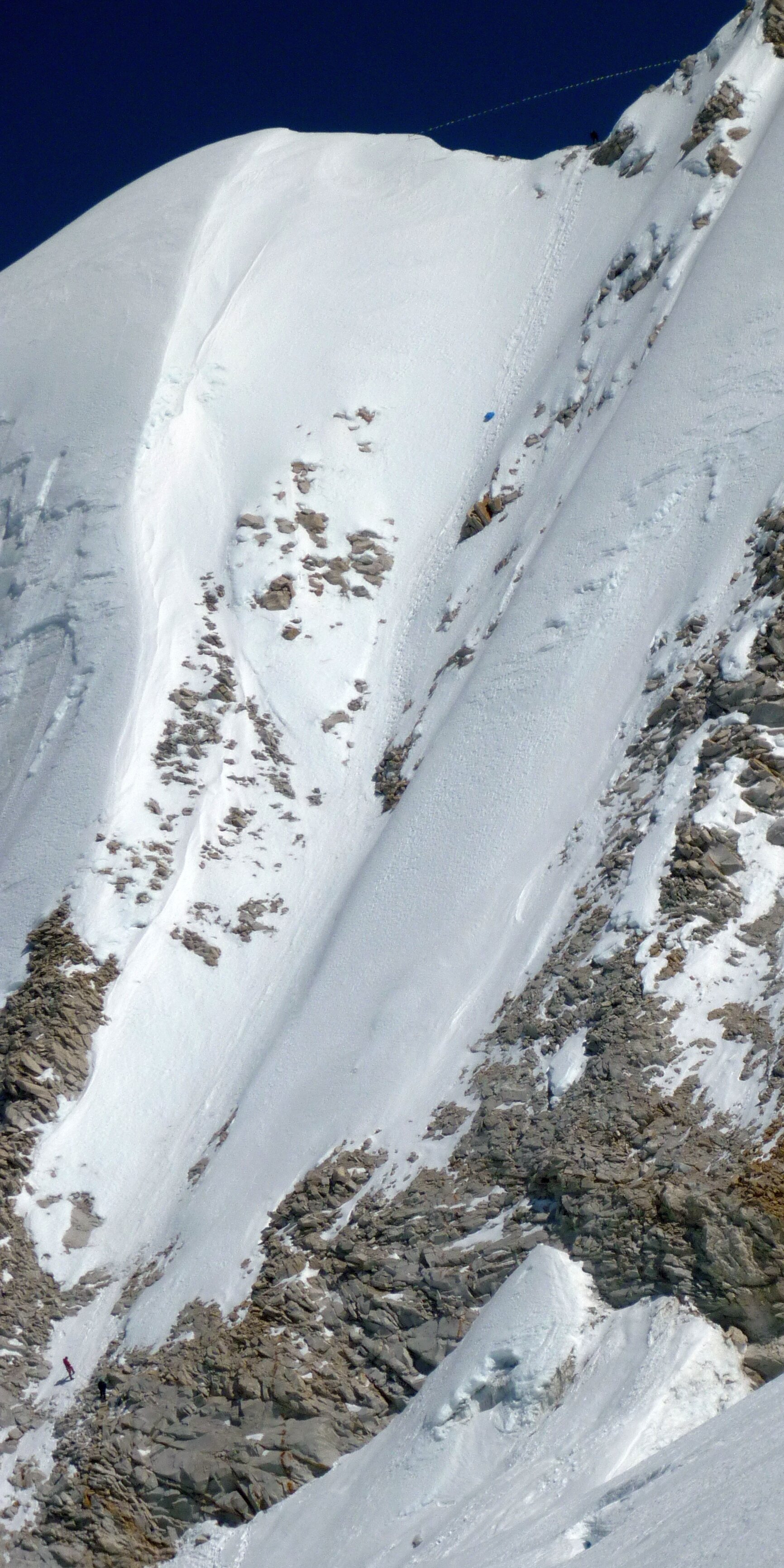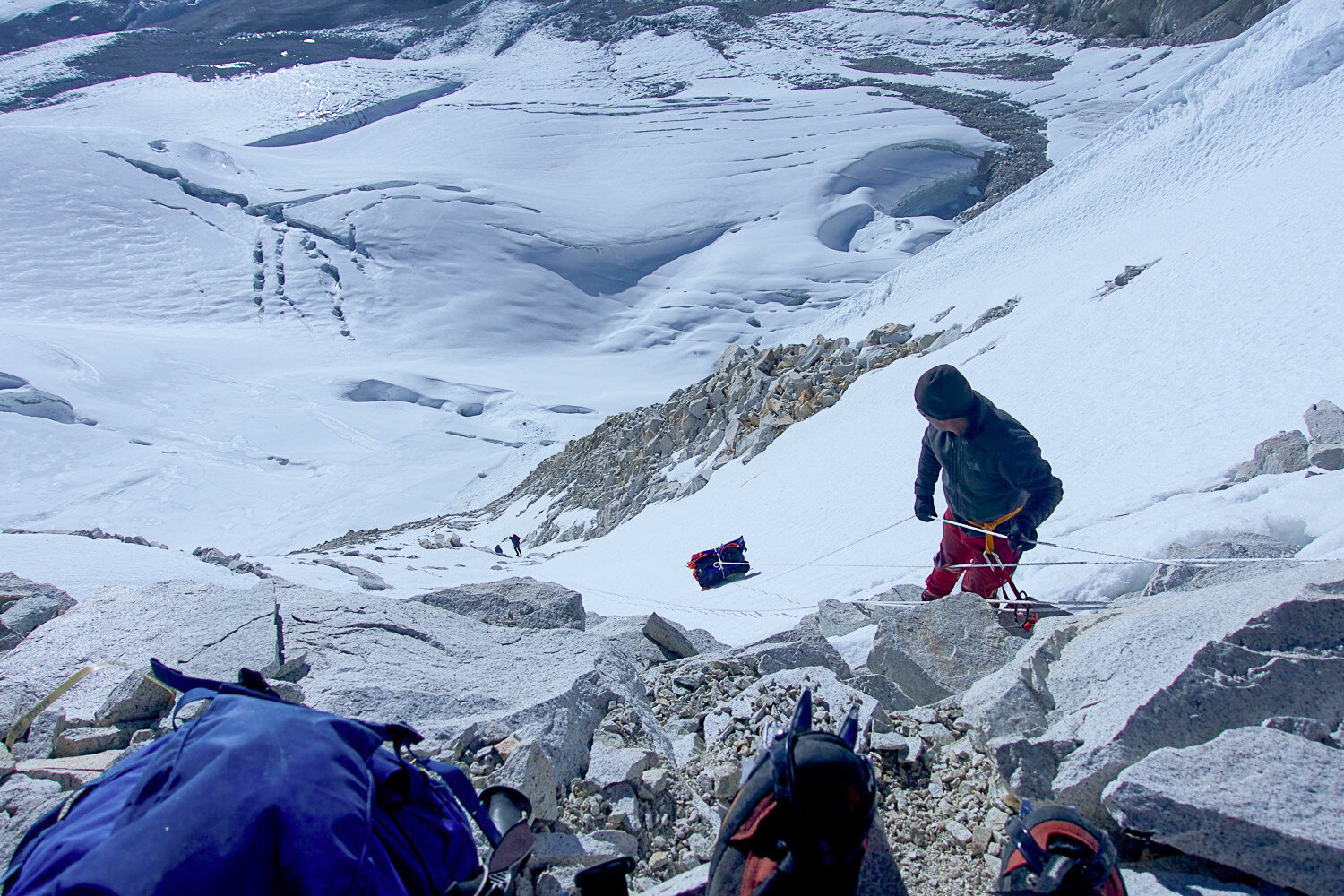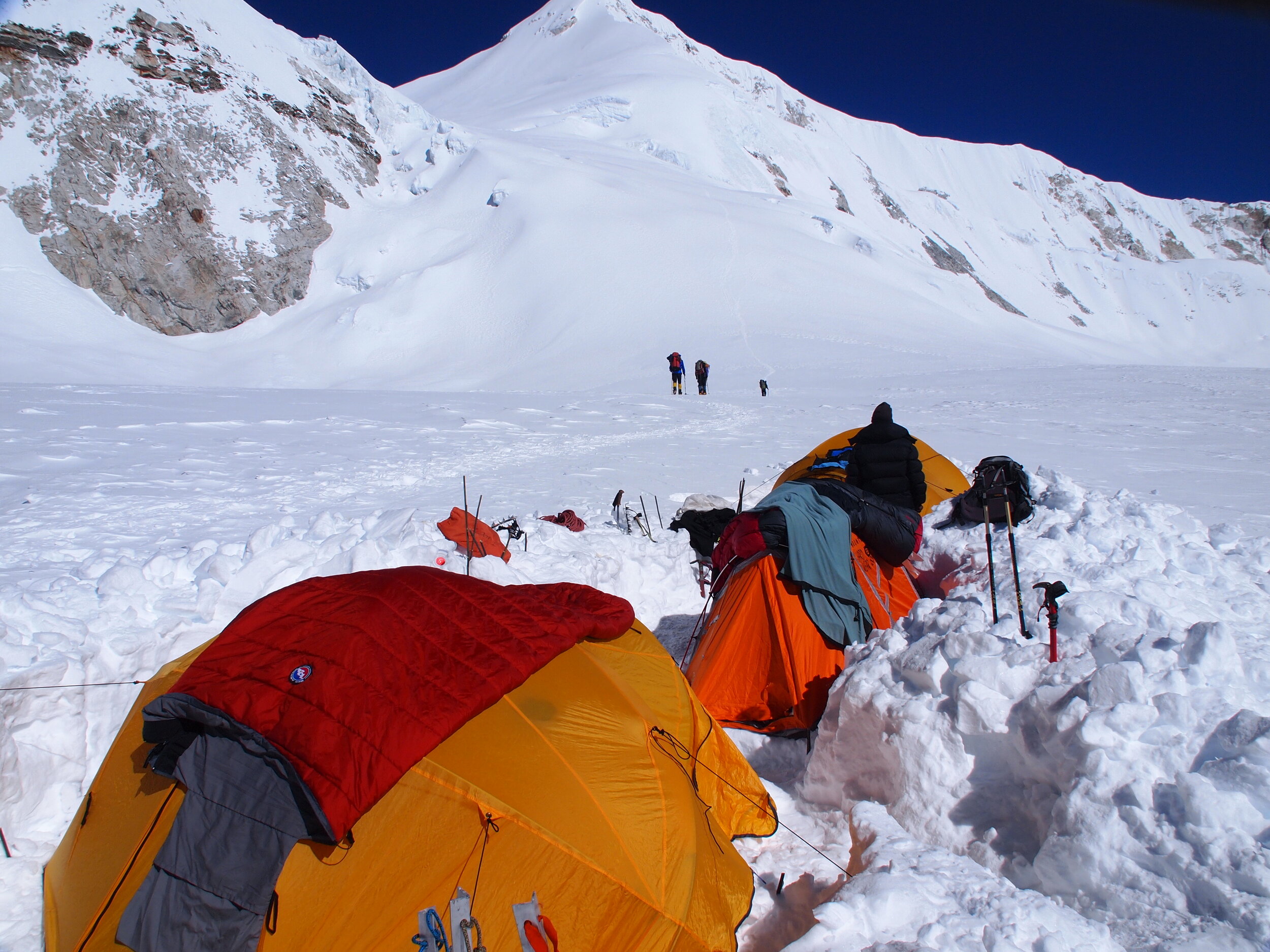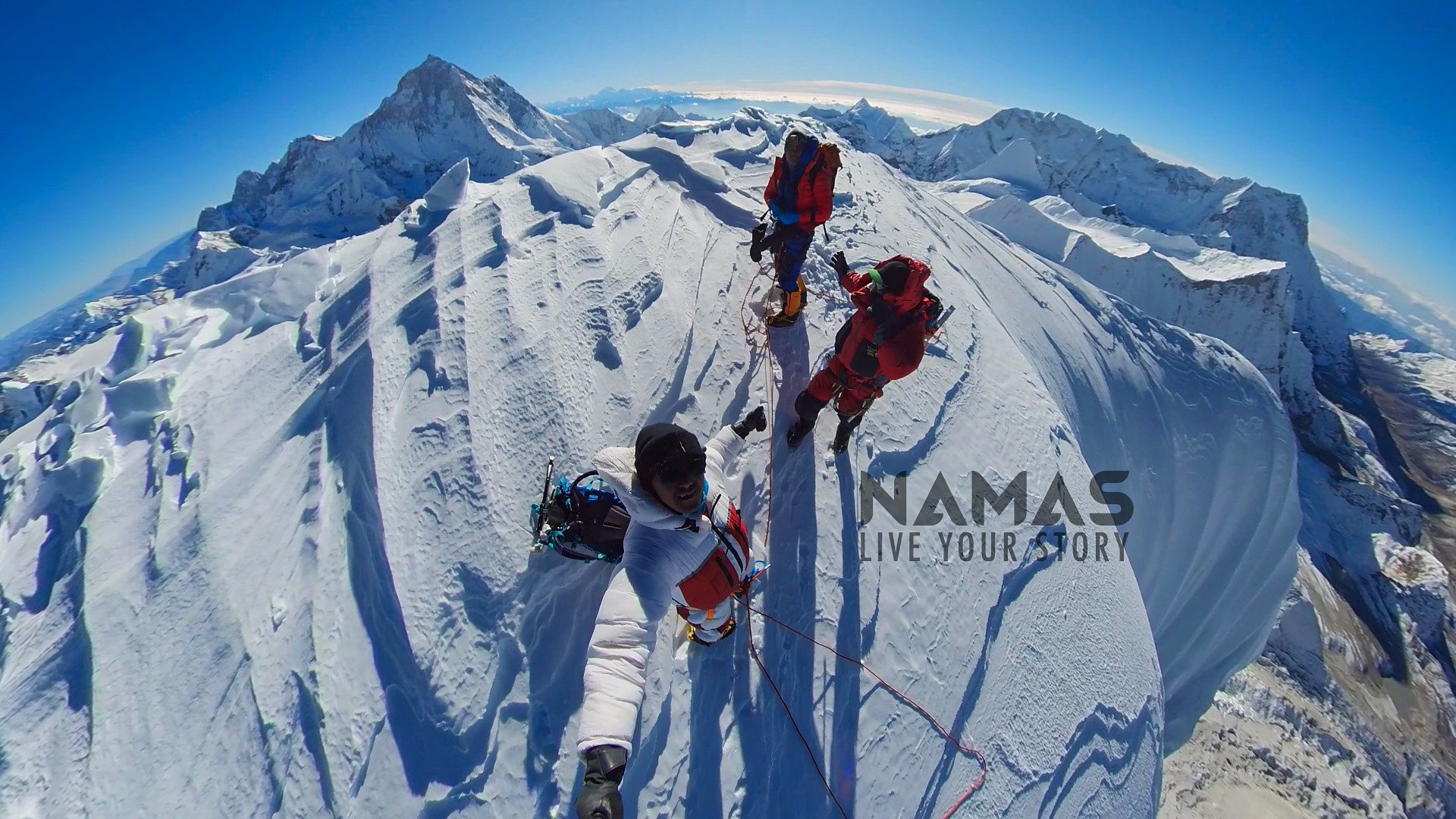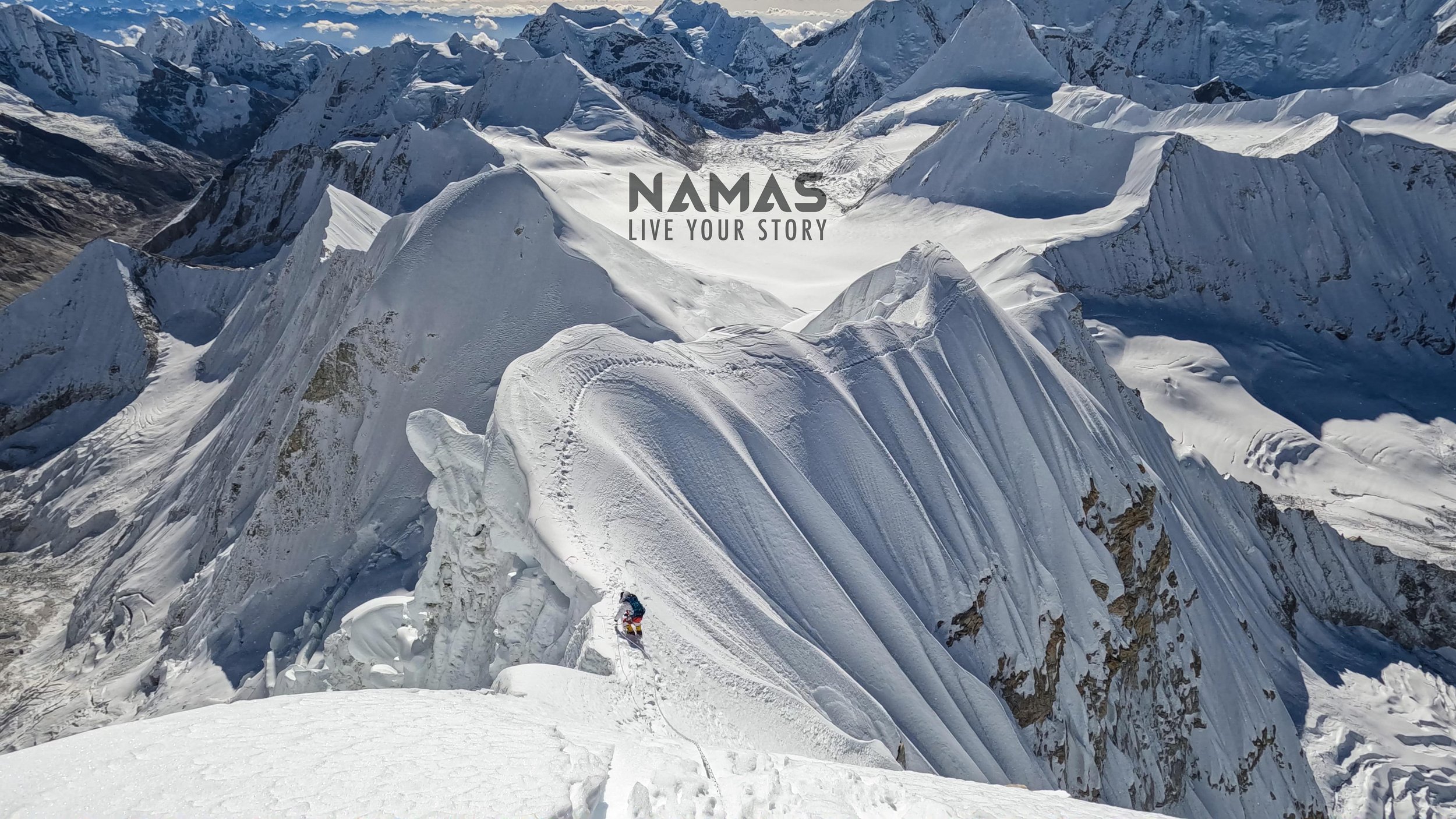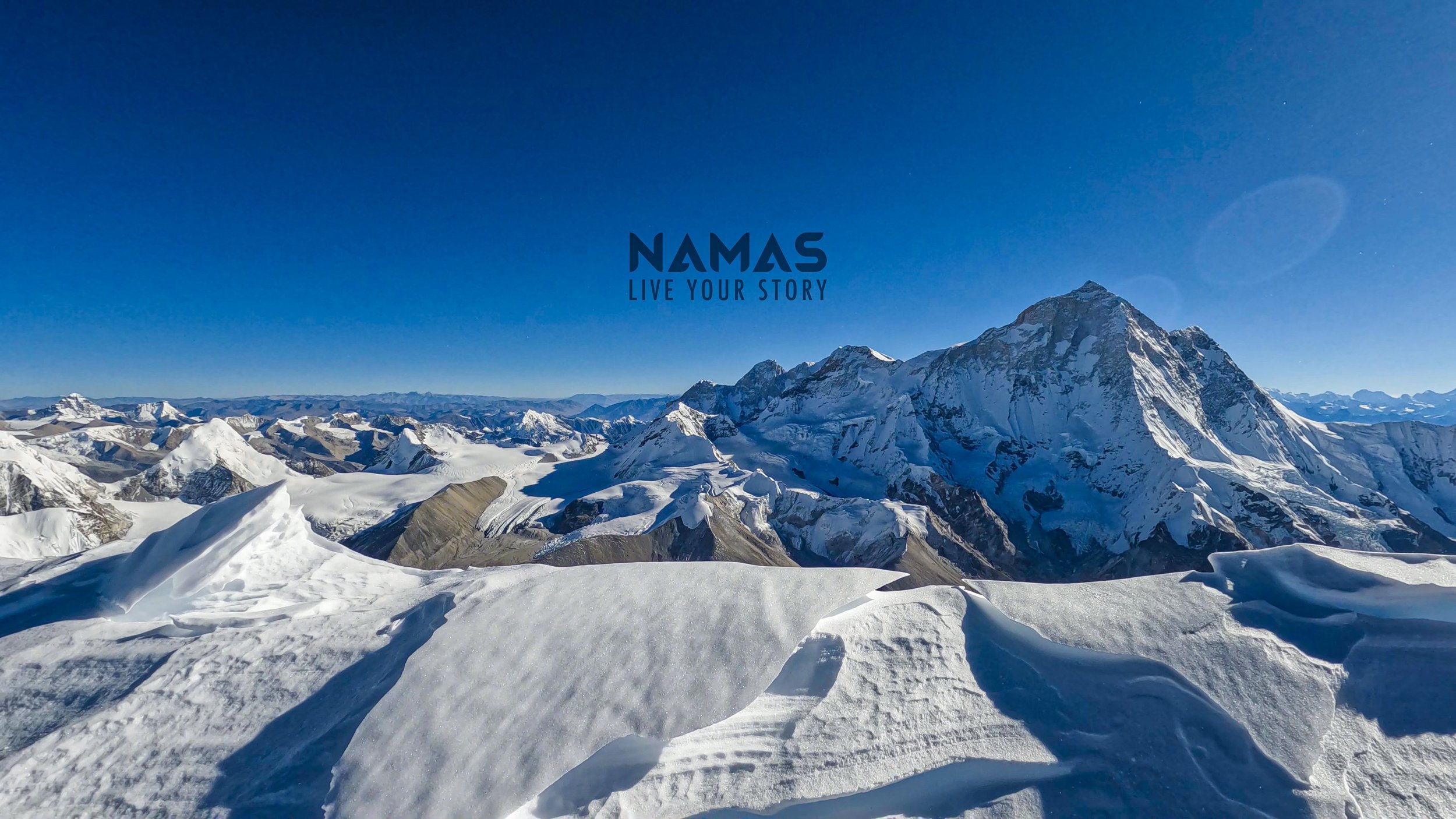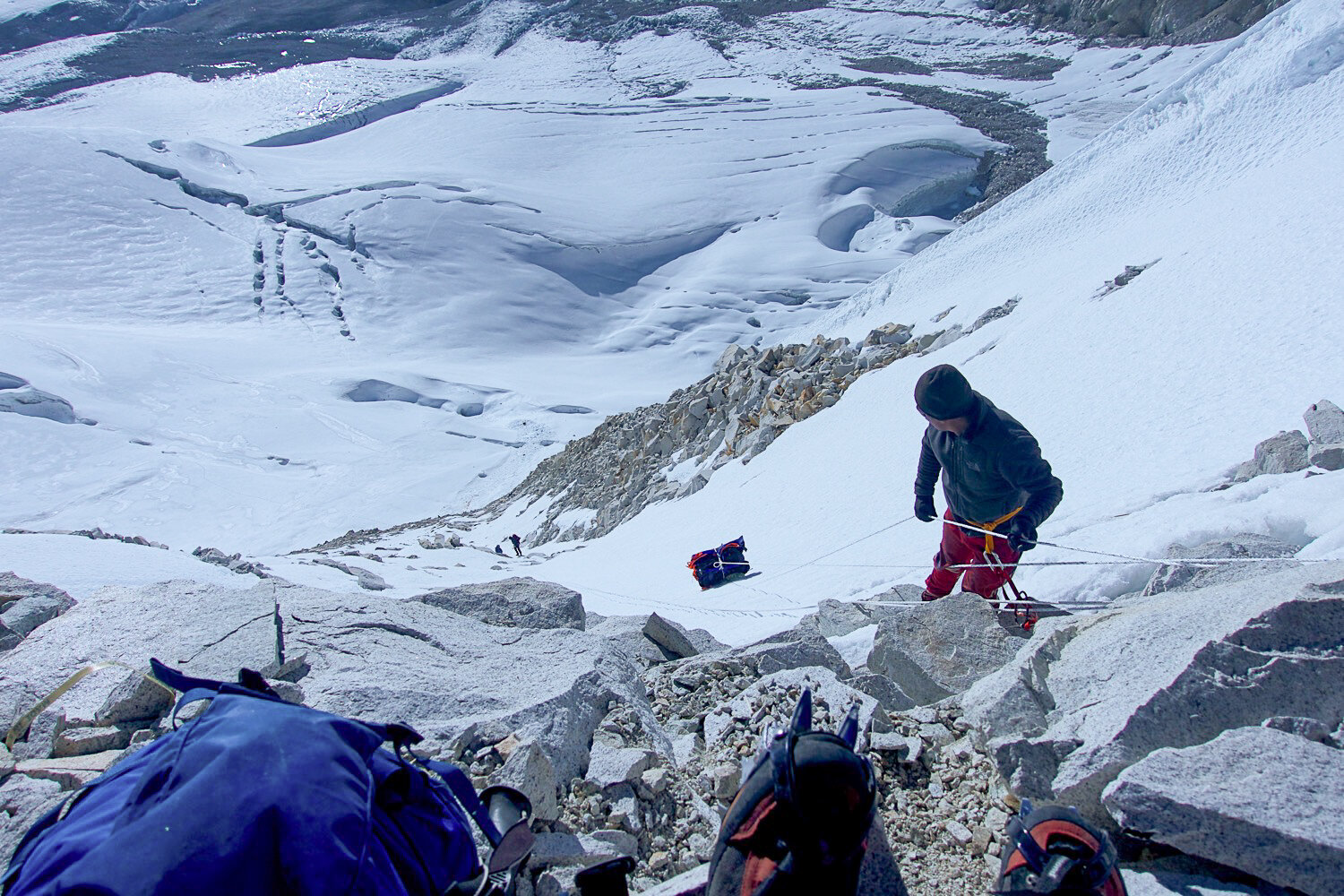Comparing 7000M Peaks: Which One is Right for Your Next Expedition?
Annapurna IV 7525M summit seen in the middle with Annapurna 2 on the left.
Perhaps you have completed several 4,000m to 6,000m summit expeditions and are now seeking a greater challenge. You might be exploring 7,000m mountains to enhance your high-altitude mountaineering experience, with aspirations of climbing Everest or one of the other 8,000m peaks. Alternatively, you may simply wish to immerse yourself in the pure exploration and remoteness that these high-altitude adventures offer.
Unsure on which 7000M peak to choose? In this blog post, we compare five prominent 7,000m mountain expeditions—Annapurna IV 7525M, Baruntse 7129M, Tilicho Peak 7134M, Himlung Himal 7126M, and Lenin Peak 7134M—to help you make an informed decision for your high-altitude journey.
1. Annapurna IV (7,525m)
Location: Annapurna Range, Nepal
Level: Advanced level
Technical Difficulty: High
Best Time to Climb: Spring (April-May) and Autumn (September-October)
Duration: 30 days
Key Features: Annapurna IV is a remote and lesser-climbed peak in the Annapurna range, known for its technical challenges. Climbers must have advanced skills in rock and ice climbing, as the route includes steep sections, exposed ridges, and deep snow. The peak's isolation offers a more immersive and adventurous experience, but it also demands excellent logistical planning. With only about 150 people ever reaching the summit, Annapurna IV is ideal for seasoned mountaineers seeking a quieter climb.
P.s. - Annapurna IV can be your expedition to prepare for Everest, Annapurna 1 or K2 expeditions.
Pros: Quieter, remote, and ideal as preparation for Everest or technical 8000m peaks.
Cons: Avalanche risk, technical sections, and steep terrain make it unsuitable for beginners.
2. Baruntse (7,129m)
Location: Barun Region, Nepal
Level: Intermedaite level
Technical Difficulty: Moderate to High
Best Time to Climb: Autumn (October-November)
Duration: 24 days
Key Features: Baruntse sits between the Everest and Makalu ranges, offering breathtaking views of both. It is popular among climbers preparing for lower 8000m peaks like Manaslu 8163M or Cho Oyu 8201M. The ascent becomes more technical after 6900m, particularly along the exposed summit ridge, which requires climbers to stay focused under challenging conditions. It’s a solid test for intermediate climbers who are ready for more demanding expeditions.
Pros: A great option for climbers seeking a moderate technical challenge before moving to 8000m peaks.
Cons: Exposed summit ridge demands advanced skills and leaves little room for error.
3. Tilicho Peak (7,134m)
Location: Annapurna Range, Nepal
Level: Intermedaite level
Technical Difficulty: High
Best Time to Climb: Spring (April-May) and Autumn (October-November)
Duration: 25-30 days
Key Features: Tilicho Peak offers a dramatic climb above Tilicho Lake, the highest lake in the world at 4900m. Though less famous than other Annapurna peaks, Tilicho is a technically demanding climb with steep rock scrambling, snow, and ice conditions at higher altitudes. This peak is for experienced climbers who have strong mountaineering skills and the endurance to navigate long, steep sections. Due to its remoteness, logistical planning is crucial, and only experienced teams should attempt this climb.
Pros: Stunning, remote, and less crowded with incredible views.
Cons: Requires advanced technical skills and careful planning due to the isolation.
4. Himlung Himal (7,126m)
Location: Manaslu Region, Nepal
Level: Entry level
Technical Difficulty: Moderate
Best Time to Climb: Autumn (September-October)
Duration: 25-30 days
Key Features: Himlung Himal offers a more moderate challenge, making it an excellent choice for climbers looking for an introduction to 7000m expeditions. The route to the summit is non-technical, consisting mainly of steady snow slopes and moderate crevasses. It’s a great option for those with limited experience who want to test themselves at high altitudes without the intense technical demands of other peaks.
Pros: Suitable for less experienced climbers with a straightforward route.
Cons: May not appeal to those seeking a more rugged, technical challenge.
5. Lenin Peak (7,134m)
Location: Pamirs, Kyrgyzstan/Tajikistan
Level: Entry level
Technical Difficulty: Moderate
Best Time to Climb: Summer (July-August)
Duration: 21-24 days
Key Features: Lenin Peak is one of the most accessible 7000m peaks, attracting many first-time high-altitude climbers. Its long, glaciated slopes offer a relatively straightforward ascent with minimal technical sections, but the altitude is still a serious challenge. Climbers must be well-acclimatized to avoid altitude sickness, and the unpredictable weather—particularly strong winds—adds another layer of difficulty.
Pros: Ideal for beginners seeking a high-altitude challenge without intense technical demands.
Cons: Crowded during peak season, with risks associated with altitude and harsh weather.
Comparison Summary
Which Peak is Right for You?
For Advanced Climbers: If you're looking for a highly technical challenge, Annapurna IV and Tilicho Peak are your best options. These peaks offer steep routes with plenty of rock and ice climbing, perfect for climbers with significant experience and no interest in crowded routes.
For Intermediate Climbers: Baruntse provides a good balance between moderate and challenging sections, making it a solid choice for those with some technical skills who are preparing for lower 8000m peaks.
For Beginners: Himlung Himal and Lenin Peak are great for climbers who are new to 7000m expeditions and want to experience the challenge of high-altitude mountaineering without the intense technical difficulties of other peaks.
Choosing the right peak depends on your experience, skill level, and what you want to achieve. Whether you’re aiming for a quiet, immersive climb on Annapurna IV or looking for an accessible, non-technical adventure on Lenin Peak, there’s a 7000m peak out there for you.
For more details on these expeditions and to plan your next adventure, visit our 7000M expedition page.
NAMAS Adventure
Climbing Baruntse 7129M Choosing the Right Route - Amphu Lhabtsa Pass 5800M or Mera Peak 6476M
Climbing Baruntse 7129M is an exhilarating high-altitude Himalayan experience. At Namas, our team of experienced climbers and expedition leaders is here to guide you in making an informed decision about the route to choose. With more than 5 years of leading expeditions to Baruntse peak in this article, we will delve into the unique features, advantages, and considerations of climbing Baruntse via Amphu Lhabtsa Pass or Mera Peak, helping you make an informed choice.
Climbing Baruntse via Amphu Lhabtsa Pass
The shorter 28-day itinerary offers an adventurous route via Khumbu & crossing over the Amphu Lhabtsa Pass at an elevation of 5800M. Here are some key highlights of this route:
Technical Challenge: Amphu Lhabtsa Pass is renowned as one of the most challenging passes in Nepal, demanding advanced climbing skills. Climbers will face zigzag glaciers, jumaring up the wall face, and scrambling/traversing rocky sections. The pass rewards climbers with breathtaking views of Imja Valley, Everest, Lhotse, Nuptse, Island Peak, Ama Dablam, and Baruntse.
Fatigueness: The Amphu Lhabtsa Pass itinerary allows climbers to reach Baruntse Base Camp with less fatigue, as they will have acclimatized during the challenging pass crossing. This can be beneficial for overall performance and enjoyment during the climb.
Climbing Baruntse via Mera Peak
For those opting for the longer 35-day itinerary, Mera Peak 6476M serves as an acclimatization/training peak. Consider the following aspects of this route:
Acclimatization: Climbing Mera Peak allows for gradual acclimatization and improves climbing skills. While Mera Peak is non-technical, it still requires physical stamina and endurance. Climbers will spend a night at the high camp situated at 5800 meters and make an early morning summit push to the Mera Peak summit at 6476 meters.
Fatigue considerations: Climbers should be aware that the Mera Peak climb is physically demanding, and they may feel tired and fatigued by the time they reach Baruntse Base Camp. Additionally, the camps between Mera Peak and Baruntse Base Camp have limited facilities, including food options. Some climbers may require additional rest days after the Mera Peak climb at Kongma Dingma.
Conclusion
When choosing the route to climb Baruntse 7129M, consider the technical challenges, acclimatization advantages, and personal preferences. Climbing via Amphu Lhabtsa Pass offers a shorter, adventurous route, while climbing via Mera Peak provides acclimatization benefits. At Namas, we are here to support you on your journey, ensuring a safe and memorable climbing experience. Make an informed decision based on your skills, fitness level, and desire for adventure. Prepare for an extraordinary expedition that will test your limits and reward you with stunning views and a sense of accomplishment in conquering Baruntse's majestic peak.
Let’s go climb Baruntse. Live Your Story
Baruntse 7129M or Himlung Himal 7126M which 7000M+ mountain peak to climb? - Namas Adventure
Baruntse and Himlung Himal are perfect intermediate level and semi-technical peaks to climb at 7000M level in the Himalayas. Whatever your goals for climbing a 7000M extreme altitude expedition be, a stepping stone to an 8000er peak or climbing simply climbing a 7000er mountain peak, we highly recommend these two peak expeditions. (Putha Hiunchuli 7246M is another great option)
Both expeditions are not crowded as the 8000er expeditions (Everest/Lhotse during spring & Manaslu during autumn). Between the two expeditions, Himlung Himal has seen slightly higher climbers compared to Baruntse. (2021 Autumn, Himlung Himal 77 - 90 climbers & Baruntse 20 - 25 climbers). So, you can certain that there won’t be a crazy amount of climbers during your expedition. Having said that, it is always good to have some number of team/s in the mountain. You can never be sure when an event turns out wrong in the mountains. Every day we are playing with the forces of nature. Balance is key.
Learning from past summit data, the Himlung Himal expedition has a higher rate of summit success compared to the Baruntse peak expedition where there are several summits during the autumn season compared to 0 summits during the spring season (commercial route). Let’s look at the data from the previous 5 years of Baruntse 7129M and Himlung Himal 7126M successful summits. (commercial expeditions). Source “Himlayan Database”
Successful summits, BARUNTSE 7129M VS HIMLUNG HIMAL 7126M
So, coming to the question of which 7000M peak I should climb?
Our answer is it depends on your preference. What is it that you want from your adventure? If the summit goal is important to you (no mountain summit is 100% guaranteed) then Himlung Himal 7126M has a better odds of making it to the summit than Baruntse 7129M and is technically less challenging.
Situations change in the mountains, you never know when the next dangers pop out in the mountain, or the hazard that was there before may not even exist. Weather is a huge factor during your high camp days. You may have a clear window for the next 7+ days or it might be pouring snow and low visibility, windy for an extended period of time. Being safe and returning home safely should be your primary goal. Whatever the circumstances, you should be open to all possibilities of success or failure. What is guaranteed is a raw and thrilling Himalayan adventure in your life memoir.
With the insight data from previous years, if you would like to choose any of the 7000M expeditions mentioned above then our team at Namas Adventure is here to assist and welcome you to take on your adventure of climbing a 7000M mountain. We organize the expedition during both seasons. For yearly mountain updates and summit success, hazards in the mountains and to be part of our team on 7000M mountain expeditions or other mountaineering expeditions, please email us at - bookings@namasadventure.com. Our team will be there to assist you on your next adventure of a lifetime.
Let’s go and explore the 7000ers.
Live Your Story
Namas Adventure Team
Mountain expeditions in Nepal during the autumn season - Namas Adventure
Planning your next 6000M, 7000M, or 8000M mountain expeditions in Nepal during the Autumn season?
September - November (autumn in Nepal) is another best time to plan your Himalayan adventures. After the spring headlines of Everest, Lhotse, and Makalu stories, autumn awaits to write new chapters and records in other Himalayan peaks.
p.s. - Everest or Lhotse expedition is not organized during the autumn season. Why do you ask? There is the financial side with almost no teams to cover up for Khumbu icefall doctors fees and the weather window is generally very short.
Manaslu 8163M (Late August - September) and Ama Dablam 6810M (October - November) attract the majority of the climbers but the way we see it there are other amazing peaks that can be climbed and explored. Here are our suggestions
7000M Expeditions
Baruntse Expedition 7129M
Remote, Raw, and Rugged. Semi-technical climb in nature, Baruntse peak is one of the 7000er mountains that is accessible to climb during autumn. The knife ridge to the summit is not for the faint-hearted. Perfect 7000M expedition that gives you a solid feel of proper mountaineering (classic and alpine style) and best of all there aren’t many climbers. No traffic and one we love taking upon.
Join us here during autumn climbs (October - November)
A classic 7000er climb in the Annapurna region. Remote, safer, accessible, and less technical with a high chance of summit success. Expect some long climbing days, particularly on summit day. A moderate amount of teams are attempting Himlung during the autumn season.
Join us for Himlung Himal 7126M expedition (September - October - November) every year.
ANNAPURNA IV 7525M
Breaking above the 7500M zone, Annapurna IV 7527M is the perfect mountaineering objective for climbers who do not want to avoid crowds/traffic to prepare for their Everest or other 8000M peak expeditions. Annapurna IV is part of the great Annapurna massif range, standing tall between Annapurna II 7937M/26040FT on the western side and Annapurna III 7555M/24787FT to the eastern face. The climbing route has fewer objective dangers and is relatively a semi-technical climb.
Far away from the sight of Everest and if you want to have a feel of the classic mountaineering expedition and raw-pristine moments then the far west expedition to Putha Hiunchuli 7246m in Nepal surely won’t disappoint.
You are a pro-seasonal high altitude skier and want to up your shredding game? This peak provides you with a perfect line. We venture into Putha Hiunchuli every 2 to 3 years. Check out our next departure dates to Putha Hiunchuli on our page.
8000M Expeditions
Manaslu 8163M
Manaslu, the mountain of spirit, is the most climbed 8000M+ mountain during the Autumn season. Now with the true summit finally becoming clear to all the climbers, the final 100M traverse to the summit does not get easier. Manaslu is also considered one of the easiest mountains at 8000M level.
We organize a Manaslu expedition every season, join our ever so small and fun-loving team, not to forget to the true summit.
Dhaulagiri 8167M
Approaching Dhaulagiri 8167M
Located in the central west of Nepal, Dhaulagiri 8167 M mountain is another 8000er expedition that is organized mostly during the autumn season. Dhaulagiri attracts a handful of climbers during the autumn season. This is the world’s lucky 7th highest mountain.
Check out 8000M expedition pages for upcoming Dhaulagiri expeditions.
Kanchenjunga 8586M
Kanchenjunga 8586M
Mount Kanchenjunga 8586M is the final 8000M on the eastern flanks of the Himalayan belt. It sits right on the border of Nepal and India (Sikkim). A handful of expeditions are organised every year and some summits have been recorded during autumn season too.
6000M Expeditions
Ama Dablam 6810M
After the Manaslu climb, almost 90% of the team is focused on the Ama Dablam. Be it to summit this peak or to strategize with next season’s Everest climb. Either way, expect a decent crowd of climbers at Ama Dablam.
Join us at Ama Dablam every autumn and possibly during early winter too. For the ones that can brave the cold.
If you want to escape the gatherings of climbers at Ama Dablam and instead climb an equally challenging or may even be a tougher peak in the Khumbu region then Cholatse is a perfect mountain to climb. Do not underestimate this mountain because it does not boast higher but the climbing routes are second to none. Climbing on a long exposed knife-edge ridge and climbing ice headwalls are some amazing feats to take on at Cholatse.
Plenty of crux and not forget the ever visible Gokyo valley during your entire climbing period. Join us at Cholatse every year during the autumn season.
Note - With Everest/Lhotse expedition not operating during the autumn season, most of the certified guides (350 - 400) are not occupied and are raring to go and help climbers achieve their dream adventures in other mountain peaks.
Since autumn is another big season to achieve your dream climbs in Nepal, are you planning any of the above-mentioned mountaineering adventures? We organize, all-inclusive expeditions during the autumn season and would love to welcome you onboard our teams. Unlike others, we organize a team of max 8 small and a compact teams, which enables us to plan swiftly and have an intimate group during our expeditions.
Join us on our 6000M, 7000M, or 8000M expeditions during autumn in any given year. Let’s go on your dream adventures.
Live Your Story
Baruntse 7129M expedition, 2021 Mountain status updates - Namas Adventure
2021 wasn’t the year to be for any teams to successfully complete Baruntse Expedition. We had small team expeditions both during Spring and Autumn this year (2021).
Spring was a big risk with uncertainty around COVID 19. Still, we managed to get a small team of 3 members and after summiting Mera Peak, our team had settled at Baruntse Base camp 5460M and was preparing for our climb to camp 1. Soon enough our team and other teams, who have been together with us since Mera Peak learned that the person we came in contact with (a day before Mera peak climb) was evacuated to Kathmandu and tested positive for COVID. After learning this most of the teams decided to call off their expedition, since all the guide members and had been in contact with the sick person’s guiding team members, and any illness and evacuations at 6100M+ or around camp 1 and beyond would have been devastating.
Autumn, our team arrived up to camp 2 at 6400M but could not proceed further as we had a very unexpected storm and heavy snowfall (4ft - 5ft deep) for 4-5 days, our guides could not go past camp two and resorted back to base camp to wait for a clear window. After waiting out for 4 days our team went back to camp 1. Windspeeds were picking up to 60 - 70mph and a high risk of avalanche in the mountain was to follow up soon in the after 2 days. Our lead guide decided to call off the expedition since the client member did not want to add any additional days (5 - 7 days) to the expedition.
The only group or two people to summit Baruntse on (2021) spring was Marek Holecek and his climbing partner Radoslav Groh. They completed a new notorious route, climbing alpine style on the west face naming it “the heavenly trap” read more about their expedition on our blog post below ⬇️
We had previous (2019) reports that there is a huge crevasse opening when leading up to the summit but no one had a concrete certain report from 2020. Since Marek and Radoslav were the only two people to summit Baruntse in 2021 and returned via the southwest (normal expedition route) we approached him asking about any potential dangers and hazards in the mountains. Marek replied back to us with the following email. (Thank you very much Marek 🙏🏼).
Hi,
At about 6500 m there is a large transverse crack over the ridge, which at the time we were there went to overcome, but we had really a lot of snow there. The crack runs across the entire ridge. Now I don't know what it looks like. The second crack was around 6000 m, above the saddle we had to rope down. The crack at 6500 m was very dangerous.
Cheers Marek
_________________
Our expedition team could spot the hole/crack at 6000M.
We will be organizing expeditions to Baruntse during 2022 and 2023 and it is great to learn about these potential dangers and hazards beforehand. Our guiding team can expect these hazards at 6500M and prepare an additional safety line around this particular ridge section. Any teams heading to Baruntse during 2022 or 2023 can use this information for their expedition too, after all, teamwork is key during the expeditions and we would like everyone to be safe in the mountains.
Want to plan your expeditions to Baruntse Peak 7129M or other high-altitude mountaineering expeditions in the Himalayas? Please inquire about your preferred expedition to our teams as we have several 6000M, 7000M, and 8000M expeditions running in the Himalayas every year.
See you in the mountains.
Live Your Story
Baruntse Peak: A Climbers’ Guide - Namas Adventure
Mountain Overview
Elevation: 7129M / 23389FT
Co-ordinates: 27°52′18″N 86°58′48″E
Location: Makalu / Barun Valley
Parent Mountain: None
Summits: 3 Fore Summit / 1 Main Summit
Country: Nepal
About the Mountain
Baruntse peak 7129M is located in the Himalayan region of Nepal, just between Lhotse 8516M and Makalu 8463M. Crowned by four peaks and bounded on the south by the Hunku Glacier, on the east by the Barun Glacier flowing north-south from Cho to the north-west by the Imja glacier, and the Hunku glacier forms the south-east boundary. Baruntse mountain stretch has four ridges and four summits. The three main ridges are situated between the glaciers, the fourth main summit lies to the west near Cho Polu peak.
History
Baruntse was first climbed on 30 May 1954, via the south ridge by Colin Todd and Geoff Harrow of a New Zealand expedition led by Sir Edmund Hillary.
How to get here?
There are three main routes to get to Baruntse Base Camp.
Via Mera Peak acclimatisation / route
Via Imja lake route, climbing Amphu Lhabtsa pass 5800
Via Sherpini col 5600M from Makalu route
Baruntse Routes
RED Route (Heavenly trap - 2021) and Blue Route (Russian Efimov 1995)
Southeast Ridge (Normal/safest Expedition route)
West Face (Heavenly trap) route, May 2021 - Two-time Piolet d'Or recipient Marek "Mara" Holecek and fellow Czech climber Radoslav "Radar" Groh completed a new route ascent to Baruntse 7129M in alpine style via the west face route which they named as “Heavenly trap” (ABO+: VI+ M6+ 80°, 1300m).
Russian Efimov Route 1995
East Ridge - 1980 by Lorenzo Ortas, Javier Escartín, Jeronimo Lopez (all Spain) and Carlos Buhler (America) of a Spanish expedition led by Juan José Díaz Ibañez.
Barutnse Base Camp 5640M
Baruntse Base Camp 5460M
Baruntse base camp is at 5640M, a few kilometers further up the glacier at the entrance to the valley which gives access to East Col. From a camp set up immediately below the pass, it is easy to cross East Col to West col and reaching Camp 1 (6,146 M) at a large snowy plateau, on the Lower Barun Glacier.
West Col 5800M
210M high, 45-degree climb on a vertical snow, rock, and ice wall to reach the ridge section. This is the first technical and objective challenge to overcome at the 5800M level.
Camp 1, 6100M
After climbing up the West col, traversing through the ridge, and hiking further down climbers will come across an open area to set up their camp 1. Normally, Baruntse camp 1 sits at 6100M level after climbing the vertical wall and traversing towards the wide-open flowing Barun glacier.
Camp 2, 6400M
Camp 2 is not far from camp 2 rather a gradual steep hill to climb and gain some altitude on the fore mountains of Baruntse. Climbing mostly on ice/snow section camp 2 is established at 6400M elevation just below the steep section which is the path for summit push.
Camp 2, Baruntse 6400M
Summit 7129M
Summit push is where most of the climb is done during the Baruntse climb. Snow and ice conditions differ every year as with most of the mountains. Fixed-line ropes are usually fixed only above camp 2. The climb from camp 2 is mostly a steep uphill climb until climbers reach the ridge/cornice section around 6600M.
The climb from here onwards is the most technical part of the climb. Fixed-line ropes will be been set up by the Sherpa team and the climb is mostly on the exposed and steep, climbing/traversing mostly on the cornice formed on the ridge of the entire Baruntse mountain. Baruntse has 3 false summits with the final summit being the farthest. The summit of Baruntse is only a small surface area on the main summit.
Climbers will have to descend the same way back. Extra caution is required as this will be 4-5 hours of the slow and tiring way back with the goal to reach camp 1.
Express Itinerary
With the use of helicopters after the summit, the expedition can be shortened up to 23 to 24 days. Flying from Baruntse Base camp 5460M to Lukla.
Further extensions
(i) Makalu expedition. Continued further down via Sherpini col and then arrive at Makalu base camp to climb. Extra 20 - 25 days required to climb Makalu (with contingency days) We highly recommend spring season if you are to plan Makalu expedition as the weather is more stable during spring than the autumn season.
(ii) Ama Dablam and Island Peak. Climb the famous and stunningly beautiful Ama Dablam. A technical climbing challenge. Can be planned during both Spring (less climbers) and Autumn (busier many climbers expected) season.
(iii) Island Peak and Lobuche East. Bag some more 6000M+ expedition in the Khumbu valley
Bonus: Amphu Lhabtsa Pass
Amphu Labtsa pass is a glaciated pass located at the head of the Honku valley. The base of the valley is located at 5,000 m (16,400 ft) and contains several glacial lakes. Amphu Lapcha is zigzag glaciers formations with base camps at North and south where we have to stop for a camp night. View from Amphu Labtsa passes Imja valley, Everest, Lhotse, Nuptse, Island peak, Ama Dablam, Baruntse, just awesome.
Are you planning to climb Baruntse 7129M mountain peak someday in the near future? If yes then our team specializes in remote mountain peaks in the Himalayan region. We go where few ventures, safely access and navigate these parts of the Himalayas, creating new possibilities in the mountains.
For more information on our Baruntse expedition or Baruntse Express expedition or any of our other international expeditions check out our website. (Call/WhatsApp) - +44 7446976060 or send us an email at bookings@namasadventure.com
Go. Explore more.
Live Your Story
Experiences, fitness and skills required to climb Baruntse Expedition - Namas Adventure
What previous experience is required to climb Mount Baruntse?
This is probably one of the most important questions we get asked a lot, and climbers will need to weigh in with their previous expedition when planning their next high/extreme altitude peak expeditions. Baruntse peak climbing is no different. This 7000M+ peak does come with a substantial set of challenges and objective dangers. First, you will have to be very comfortable and experienced with ropes, climbing with climbing gear, ascending and descending on fixed-line, and bearing crisp cold climbing conditions.
Preferred Previous mountaineering experiences
Anywhere above 4000M - 6500M+ peaks with semi-technical to technical climbs around the world. For example Alpamayo, Huscaran, Aconcagua, Mt. Kenya, Denali, Mt. Blanc, Mt lenin, Ebrus. If you have experience climbing semi-technical to technical peaks with long ascents and descents, you may be qualified to tackle Baruntse and other 7000M peaks in the Himalayas. It's important to consider your previous expedition experiences and determine if you have the necessary skills and comfort with climbing techniques, such as using ropes and climbing gear, ascending and descending fixed lines, and handling cold conditions at high altitudes.
Fitness level - 4
We have graded fitness level 4 for Mount Baruntse. To successfully climb Mount Baruntse, a high level of physical fitness is necessary. This includes exceptional overall fitness, endurance, and strength. Mental toughness is also essential for these demanding expeditions. Prior experience on semi-technical to technical peaks with long ascent and descent sections is preferred for this challenge. It is important to be in top shape and have the necessary skills to tackle this physically demanding climb.
To prepare for the physical demands of climbing Mount Baruntse, it is recommended to have an exceptional level of all-around fitness. This may include the ability to run a half marathon or marathon, cycle for 2-3 hours, or hike with a load of 20 kilograms for 3-4 hours. Additionally, mental toughness and previous climbing experience will also be beneficial for success on this expedition.
Good strength and muscle endurance training routine can be implemented with a variety of approaches such as taking part in cross-fit sessions and kettlebell training.
Skills to be learned.
Guides in Nepal will advise you to keep it real simple. So there are four basic things you must - must know.
Figure 8 knot and how to tie a stopper knot at the end of the rope.
Ascending/jumaring on fixed-line and abseiling with super 8 belay device or ATC descender in multi-pitch sections. You will have to be very very careful and well-rehearsed on abseiling since there is no room for errors when descending. You only get that one chance when coming down so you will have to be super careful. And for safety backup have ‘prusik knot’ tied on the main rope.
Climbing, traversing and hiking with crampons on for long-duration on ice, rock, and snow surface.
Performing snow arrest and safely getting back up if by any chance climbers slip and slide.
As climbers joining Baruntse expedition will already have previous experiences, we recommend climbers to have extra essential skills in their climbing arsenal. If you cant find mountains to climb near your place, rock climbing indoors and outdoors is one of the best ways to keep refreshing your rope skills and staying in climbing shape.
With all commercial expeditions, the majority of your expedition is handled and taken care of by your expedition company. Having competent members from operational management to guiding leaders on the field is key for any successful expedition. Once you are signed up and you’ve got the necessary skills and experience all you need to be is physically and mentally prepared that is your commitment to fitness training.
Challenge yourself.
Go. Live Your Story
Are you planning to climb a remote, rugged, and challenging 7000M+ peak with substantially less objective danger? Whether your goal is simply to climb an extremely high altitude peak, explore and climb remote peaks in Nepal, or progress to higher 8000M+ peaks then our team at Namas Adventure/Expedition is set for your next adventure. Email - bookings@namasadventure.com or Call/Whatsapp us at +447446976060 and our team will be there to answer your inquiry and instruct you with any questions regarding the expedition.



